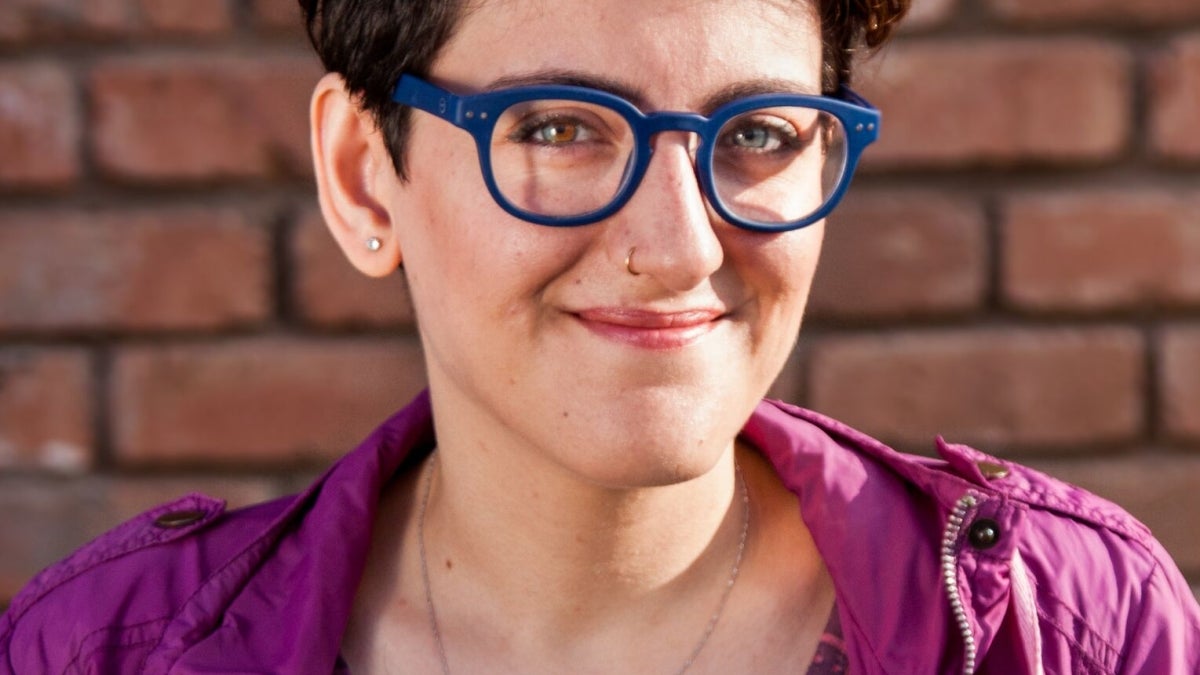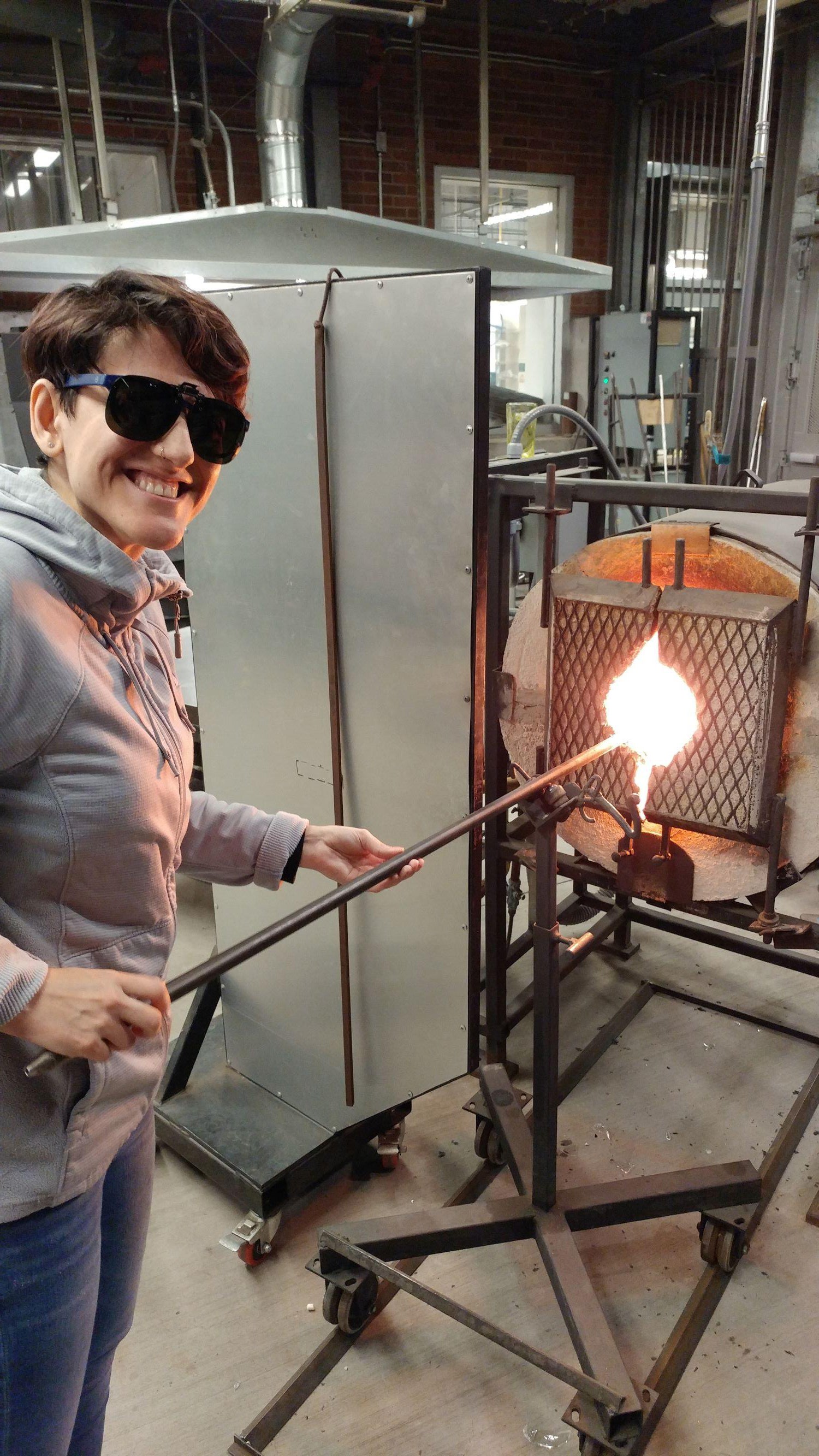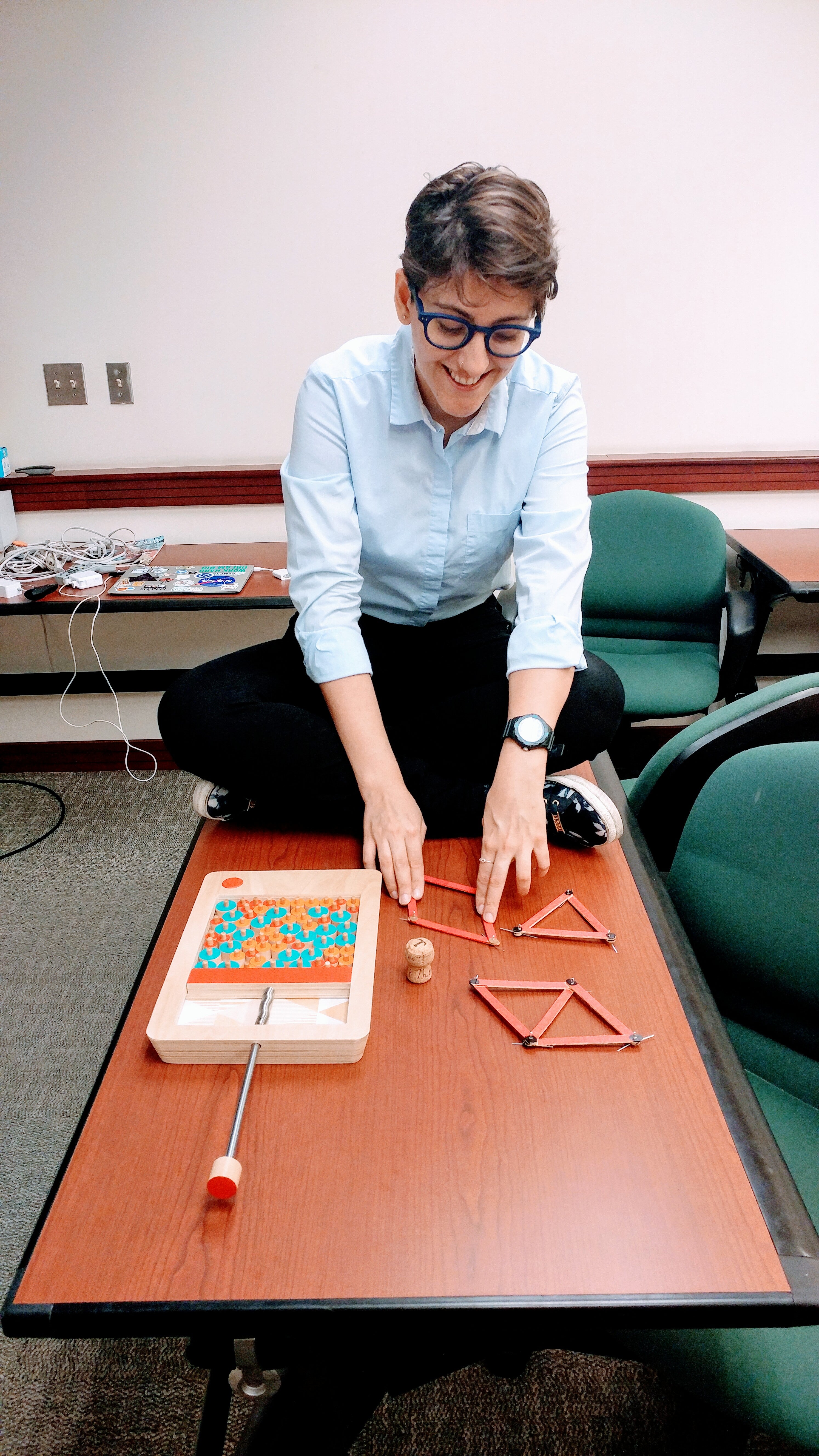'Cracking the Glass Problem': ASU physics alumna part of international collaboration

Arizona State University physics doctoral alumna Varda Faghir Hagh.
Most often when we think of glass, we think of the panes in our windows and the dishes on our tables. And most of us feel we have a basic grasp on the concept of glass as a material — the sand melts, and then artists somehow blow and mold it into the things we use, both practical and decorative.
However, at a molecular level, glass is actually quite mysterious. Physicists are seeking to understand exactly how and why it does what it does — transitioning very slowly from a solid to a liquid while keeping many of its liquid-like properties with an entirely new use and appearance.
Arizona State University physics doctoral alumna Varda Faghir Hagh is one of the physicists collaborating on an international level to learn as much as they can about glass and its behavior.
Hagh completed her PhD at ASU in July 2018. Her thesis research was in the rigidity of disordered materials — namely glassy materials. She studied how their structures can be mapped into networks, and how they respond when acted upon by pressures or forces.
By the time she officially graduated that December, she was already working in her current appointment — as a postdoctoral researcher at the University of Chicago in Illinois and a member of the Simons Collaboration on "Cracking the Glass Problem."
Hagh also has a courtesy appointment at the University of Oregon and has traveled to work in several other locations, including Kavli Institute for Theoretical Physics at UC Santa Barbara, California, and Syracuse University, New York.
“I have three advisors and many collaborators, so my job also gives me the opportunity to travel and visit different universities, which I enjoy a lot," she said.
Disordered and marginally stable
Building on her doctoral research, Hagh is now studying the nature of marginally stable materials — especially how they react and change when compressed or jammed into a state that can be catastrophically changed by even a small amount of force or deformation.
The word “disordered,” applied to material like glass, refers to its molecular structure. Crystals, for example, are very orderly in their structure — their atoms and molecules are placed in a very neat and predictable pattern so that representative data on how they behave can be easily used to predict and understand other crystal properties and scenarios.
When early physicists began studying physical properties of the solids, they modeled them as having an orderly, crystal structure. However, they soon discovered that many of the properties of disordered solids are significantly different from crystals and the dynamics through which they turn from a liquid into a solid are a lot more interesting.
The nature of disordered materials makes understanding and predicting the formation of these materials far more complex. The lack of order means that these materials can take many forms, therefore their structure is very malleable and they can be manipulated with comparative ease. Because of this, most of the materials we currently surround ourselves with are classified as “disordered.”
By careful study of the properties of simulated glassy systems in their marginal state, Hagh can compare her findings to existing theories of what they might do, which will tell us more about the behavior of glasses in general.
The other scientists in Simons Collaboration are examining different aspects of glassy structures and their properties, and are trying to understand the dynamics of glass transition, which is one of the biggest unsolved problems in condensed matter physics. This means “Cracking the Glass Problem” will be a huge leap forward in physics. A better understanding of these structures, and how they behave and respond, would also mean new methods in developing smarter materials. While we are familiar with obvious uses of disordered materials in the form of glass — in buildings, dishes, and decor, from a material physics perspective it actually encompasses a far wider range and is used in countless things we encounter on a daily basis. Foams, pastes, coffee grounds, flour, in general, all granular structures are disordered.
Hagh’s particular focus of the jamming transition has many possible applications in food processing and transportation — maintaining existing structures under heat and pressure and building new ones. Perhaps if we understand why the jamming transition happens, we can understand how to stop it from happening.
Hagh glassblowing.
When she is not studying glassy structures on a molecular level, Hagh enjoys a related activity — glass blowing and sculpting.
Alongside her physics research at ASU, Hagh took sculpting classes that she felt contributed to her studies and helped her develop the skills to bring her creative ideas into 3D reality.
“I really enjoy working with my hands,” Hagh said. “Sometimes sitting at a computer all day and working with abstract ideas, you want to do something physical and realize something tangible.”
The gift of physics
Hagh found her love of physics while in high school in her home country of Iran.
“I was just generally interested in understanding how nature works,” she said. “I was amazed by learning how machines worked, how rainbows were made, and when I looked up at the night sky, I always wondered how stars were formed.”
She obtained her undergraduate and master's degrees in physics at the University of Tehran in Iran, and then decided to come to the United States to pursue a PhD.
“Physics has taught me a lot of great things,” she said, citing both a general knowledge of the universe and also the essential ability to be a critical thinker. “When you get a degree in physics, you become a good problem solver with a large variety of skills. This gives you the ability to find a job in a large number of areas and collaborate with scientists from many different fields.”
Her initial vision of what it would mean to be a physics scholar was a little different than the reality.
“I had read popular science books and I thought you just sat in a room and dreamed up theories,” she said. “But, what I learned, and what I wish people knew, is that physics is not just making up theories and ideas — even though it might sometimes sound very abstract. You have to back up your theories with evidence and test their predictions. Otherwise, they won't have any value."
“Science in part is a very particular and accurate way of gathering data and collecting information about a phenomena, and then making hypotheses and models that would explain those data. You need to test your hypotheses and their predictions over and over, again and again, to make sure that they can be trusted as theories and you should be open to accept that they are wrong if there is an objective evidence that contradicts your theory," she said.
"I think that’s the biggest gift that physics has given me. I also have this passion for learning, and problem solving and physics has always provided me with an opportunity to learn more about the world and be able to solve more complex and interesting problems, which is something I really value personally.”
This solid foundation, combined with the state-of-the-art research opportunities available to her through ASU, prepared Hagh for the work she is currently taking on.
“I worked with Michael Thorpe, who is a renowned physicist in the physics of glasses and disordered systems,” she said. “I was at the Center for Biological Physics which is full of bright people and scholars who are doing really high-quality research. Interacting and being around them on a daily basis helped me learn all the knowledge and computational skills that was required for this position."
Hagh said she loves having a problem to tackle.
Hagh also took advantage of opportunities to participate in research programs off campus. Encouraged by her advisors, she applied to two summer schools, where she met and worked with others studying in her area, including several she is working with now.
“Also, my adviser would encourage me to go to conferences and present my work. My research was highly collaborative which gave me the opportunity to work with physicists and mathematicians all around the world,” Hagh said. Two of her published papers were written in collaboration with several research groups and tied in nicely with the work she would be doing on the Simons Collaboration.
“The collaborative nature of my work and the fact that my advisor supported and encouraged me to participate in several programs and go to conferences helped me with being accepted into my current position,” she said of her posting at the University of Chicago.
Ultimately, Hagh hopes to remain in academia and become faculty somewhere to play her part in contributing to the next generation.
However, anything that will let her tackle an interesting problem is always on the docket, and she will certainly continue her research. The possibilities of being involved in new and exciting research areas, and working with groups such as the Allen Institute for Brain Science, or Google Brain, hold a definite fascination.
“Even though I have not done specific research in this area, I have picked up a lot of skills that hold a lot of crossover through my collaborations,” she said. “ But of course we will see how things go.”
“I am open for any exciting career opportunities, as for me enjoying the journey is as important as the destination.”
More Environment and sustainability

Charles Redman, founder of the School of Sustainability, faces a new adventure: Retirement
At the retirement celebration for Charles Redman on Oct. 22, two messages persisted: Redman’s contributions to Arizona State…

10 climate insights to guide our future
A group of globally renowned social, natural and climate scientists has once again convened to offer their newest annual…

The future is green: Job demand translates to high employability for ASU sustainability grads
A 2023 report by Forbes on the state of green jobs confirmed what Arizona State University has been trumpeting for years:…

